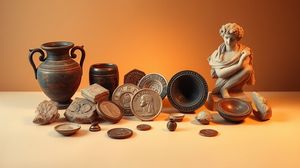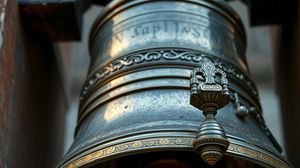
The Bank of England Museum provides a fascinating insight into the history of one of the world's oldest central banks. Located within the Bank of England itself, it offers visitors a unique opportunity to delve into its rich heritage and learn about the pivotal role it has played in the financial landscape of both the UK and the world.
The museum houses a collection of banknotes that chronicles the evolution of currency over the centuries, showcasing the artistry and technological advancements in note production. This offers a tangible link to historical events and an understanding of economic history that is both educational and visually intriguing.
One of the more unusual exhibits features a real gold bar that visitors can try to lift. Although it weighs in at around 13 kilograms, it's surprisingly difficult to raise, giving a hands-on appreciation of gold's weight and value.
The museum also addresses the infamous activities of counterfeiters, displaying examples of forged notes and the lengths to which the Bank has gone to thwart these attempts. This highlights the constant battle between security and ingenuity in the world of currencies.
Interactive displays and educational resources allow visitors of all ages to engage with the material in a rewarding and informative manner. The exhibits are designed to demystify economics and make complex topics accessible to everyone, from schoolchildren to financial professionals.
The Bank of England Museum does not shy away from the historical crises and challenges faced by the Bank, providing insights into how it has weathered financial storms and adapted to changing economic landscapes. This aspect of the museum underscores the resilience and adaptability required to maintain financial stability over the centuries.

Making the Most of Your Visit:
If you really want to get the most out of your visit, make sure to check out the special exhibitions. They're often themed around historical anniversaries or notable developments in banking and finance, offering fresh perspectives beyond the permanent displays.
Be sure to look for the display on the Governor's office. While you can't actually visit the Governor's office itself, this exhibit provides interesting insights into the role and responsibilities of the Bank's head honcho over the centuries.
The museum may be small, but it's packed with information. To avoid sensory overload, take a quick overview first to identify the areas that interest you the most. This way, you can dive deeper into those sections without feeling rushed.
If you're visiting during lunchtime, the surrounding area in the City of London is a hub of activity. Consider timing your visit to start or end around lunch to avoid the crowds in nearby cafes and restaurants, as they can get quite busy with local professionals.
If you're fascinated by the museum's historical perspectives, make a point of exploring their online resources afterward. They provide a wealth of additional information and materials to complement what you've seen in person.

Visiting Times & Costs:
The Bank of England Museum is open to the public. It offers free admission to all visitors, making it accessible for everyone interested in exploring the museum's exhibits and collections.
Opening Hours:
- Monday to Friday: 10:00 AM to 5:00 PM.
- Closed on weekends, Bank Holidays, and during the Christmas holidays.
Accessibility:
- The museum is accessible to wheelchair users, offering step-free access throughout the building.
- Assistance dogs are welcome.
- An audio guide is available to help enhance the experience for visually impaired visitors.

Address & Map:

Nearby:























